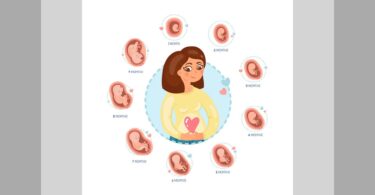Originally published in the Simillimum: https://hanp.net/simillimum/ Reprinted courtesy of the author.
ABSTRACT
Isopathy is a system of alternative medicine which hasn’t shown equal success in curing all diseases. This article gives an explanation for the possible cause of this inconsistency and also identifies those diseases which could respond well to isopathic treatment.
Introduction to Isopathy
Isopathy (I would like to call it isopathic homeopathy) is an offshoot of homeopathy and like homeopathy uses diluted, potentized forms of substances for treating diseases i.e., using a dilution process similar to that in homeopathy.
This homeopathic potentization process comprises of multiple steps of serial dilution of the medicinal substance with repetitive succussion (shaking) of the diluted solution following each successive dilution. According to homeopathic philosophy, this pattern of dilution results in potentization or dynamization of the medicinal substance and though the physical material amount of the medicinal substance decreases with each successive dilution, the medicinal power continues to increase with each successive dilution because the medicinal power of the substance is transmitted into the solution in a dynamized, energy form through this dilution process.
Though isopathy, like homeopathy, uses diluted, potentized solutions of substances as medicines, it differs from homeopathy in one fundamental aspect. Isopathy is based on its basic principle “aequalia aequalibus curentur” or “same cures same” whereas homeopathy is based on the principle “similia similibus curentur” or “like cures like”.
The isopathic principle “aequalia aequalibus curentur” or “same cures same” means that the disease causing substance or infectious material itself can be used as a medicine for curing the same disease (This principle is, in a way, similar to the principle of vaccination for prophylaxis against infectious diseases). The disease causing substance, obviously, cannot be used directly as a medicine and needs to be modified in some way before it can be used as a medicine. In isopathy, the pathogenic substance or infectious material is diluted by the homeopathic dilution process for it to acquire the medicinal power.
The lack of consistency in Isopathy
This isopathic principle “same cures same” does not seem to work well in every disease and isopathy has shown inconsistent results over the years being quite effective in some diseases and failing in others.
The lack of consistency in isopathy is best illustrated by the “nosodes” of homeopathy. Nosodes are homeopathic remedies prepared from a pathogenic material obtained from a diseased person such as tissue sample, morbid secretions such as mucus, pus or material obtained from the culture of the causative organism1.
Thus, Diphtherinum (nosode of diphtheria) is prepared by the homeopathic dilution of the Diphtheritic toxin or Diphtheritic membrane and is an isopathic remedy for diphtheria. Similarly, the nosodes Psorinum (nosode of scabies), Tuberculinum (nosode of tuberculosis), Syphilinum (nosode of syphilis), Anthracinum (nosode of anthrax), Pertussin (nosode of pertussis) are isopathic remedies for scabies, tuberculosis, syphilis, anthrax and pertussis respectively.
If isopathy were to be effective in curing all diseases, all the above nosodes would have been effective in curing their respective diseases. But that is not the case at all. Constantine Hering, who worked extensively with nosodes, concluded after seven years of rigorous clinical trials that nosodes were not successful in curing their own diseases i.e., they were not successful as isopathic remedies2.
Nevertheless, there are nosodes such as Diphtherinum, Anthracinum and Pertussin which have been mentioned in literature to have had considerable success as isopathic remedies2, 3, 4. A similar level of success is not mentioned in the case of the other nosodes like Psorinum, Tuberculinum and Syphilinum with respect to curing their own diseases. There are many such examples of inconsistency in Isopathy.
Diseases which respond well to Isopathy have a common characteristic
The above mentioned diseases, diphtheria, anthrax and pertussis, where isopathy has been effective have a common feature in their pathogenesis. The pathogen in each of these diseases produces an exotoxin. These exotoxins are critically important pathogenic factors in the disease pathogenesis.
In diphtheria, the pathogenicity can be solely attributed to a single virulence factor, the diphtheria exotoxin6. Likewise, the pathogenicity in anthrax is critically dependent on three virulence factors, the “edema factor”, the “lethal factor” and the “protective antigen”, and in the case of pertussis, on two virulence factors, the pertussis toxin and pertussis AC toxin6.
Contrary to this, in diseases such as tuberculosis and syphilis where isopathy has not been effective, the pathogenic organisms lack specific exotoxins that the disease pathogenicity can be attributed to. Thus, it can be seen that among infectious diseases, isopathy has been more effective in exotoxin producing bacterial diseases.
The presence of specific virulence factors in exotoxin producing bacterial diseases could have possibly rendered these infectious diseases susceptible to isopathy. The lack of specific pathogenic factors in tuberculosis and syphilis could be the reason for the failure of isopathy in these two diseases6, 7.
In the recent years, randomized controlled trials have proven isopathy to be successful in treating specific allergic diseases such as hay fever5. Here too, the pathogenicity is critically dependent on a single or a few pathogenic substances, the allergens.
It can therefore be hypothesized that isopathy would be particularly effective in those diseases where the pathogenicity is dependent on a critically important pathogenic factor/ factors. The isopathic remedy could be employed as a specific remedy or a Genus epidemicus remedy to successfully treat a large proportion of cases in such diseases. A list of such diseases which satisfy the above criteria is given below.
A list of diseases which could possibly be effectively treated with Isopathy
Exotoxin producing bacterial diseases – (such as) anthrax, clostridial gas gangrene, diphtheria, pseudomembranous colitis (due to Clostridium difficile), post diarrheal hemolytic-uremic syndrome caused by shiga toxin producing E.coli and Shigella, streptococcal and staphylococcal toxic shock syndrome etc.
Isopathic remedies prepared by homeopathic dilution of the secreted exotoxin/exotoxins might be used to treat the respective exotoxin disease. Isopathy would probably give the best results when the isopathic remedies are prepared from a purified extract of the exotoxin rather than a crude exotoxin extract from the bacterial culture or tissue sample. This would avoid unwanted interference from other substances present in the crude extract.
Other diseases –Apart from exotoxin producing bacterial diseases, Isopathy is likely to be effective in other diseases where the pathogenesis is critically dependent on a particular virulence factor/ factors or pathogenic factor. Isopathy therefore, could prove to be effective in treating poisoning by neurotoxic venoms of some snakes and other animals10. A well known such disease is “puffer fish” or “fugu” poisoning caused by Tetrodotoxin, a highly potent neurotoxin which is known to cause occasional outbreaks with deaths also being reported. Isopathy can be tried as a specific treatment for tetrodotoxin poisoning as it has no known antidote or specific treatment, the affected patients being managed symptomatically at present.
Specific allergies – Isopathy has been proven in recently conducted clinical trials to be beneficial in treating seasonal allergic rhinitis and could be useful in treating other specific allergies also5.
A note on the exotoxin producing bacterial diseases botulism and tetanus
It has been mentioned earlier in the article that isopathy has been effective in curing exotoxin producing bacterial diseases such as Diphtheria, anthrax and pertussis. Botulism and tetanus also come under exotoxin producing bacterial diseases, but it has not been mentioned in literature that isopathy has been particularly effective in curing these two diseases. A possible explanation for this is given below.
Botulism and tetanus differ from other exotoxin producing bacterial diseases in one aspect. In botulism as well as tetanus, the pathogenic organism (bacterium) multiplies in the body, produces the exotoxin and dies within the body after the production of the exotoxin – all this occurring during the incubation period itself much before the onset of the disease symptoms.
There is no active bacterial infection in the body and there is no further production of fresh toxin after the onset of the disease. By the time the disease is manifest in the patient, most of the toxin that has been produced by the bacteria during the incubation period has already entered the host cells of the patient and started exerting the toxic action.
Contrary to this, in the case of diphtheria, anthrax and pertussis, there is active bacterial infection at the time of disease manifestation and there is continual production of fresh toxin throughout the course of the disease. This freshly produced toxin is yet to enter the host cells and exert its toxic action.
So with this scenario, it appears that isopathy is effective in only those exotoxin diseases where there is continued production of fresh toxin and is not effective in diseases like botulism and anthrax where most of the toxin has already entered the host cells. Therefore, isopathy probably acts by preventing toxin entry into the host cell and is unable to counteract the pathogenic effects of the toxin which has already entered the host cells. Nevertheless, isopathy might possibly still be employed in botulism and tetanus as a prophylaxis against the disease.
CONCLUSION
This article reaches the following conclusions:
- A judicious use of Isopathy, selectively applied to such diseases as mentioned above could result in a higher success rate with less failure.
- Isopathy is likely to be effective in those diseases where the pathogenesis is critically dependent on a specific pathogenic factor/ factors, particularly those acting at the cell membrane level.
- Isopathy appears to act by preventing the action of the specific pathogenic factor on it’s receptor at the cell membrane.
- Exotoxin producing bacterial diseases, specific allergies, poisoning due to specific toxins acting at their respective receptors in the cell membrane could be effectively treated with Isopathy.
REFERENCES
1. National center for homeopathy website. “Nosodes” article. Accessed on 30/04/2009.
http://www.homeopathic.org/articles/view,44
2. David Little. David Little’s website simillimum.com. “Nosodes in homeopathy” article Accessed on 30/04/2009.
3. J.E.Fraser MD, Henry Clay Allen MD. “The materia medica of the nosodes” “Diphtherinum: An involuntary proving” article. Presented and arranged by Dr.Robert Seror- from Homéopathe International website. Accessed on 30/04/2009.
http://www.homeoint.org/seror/nosodes/diphtherinum.htm
4. Henry Clay Allen MD. “The materia medica of the nosodes” “Anthracinum” article. Presented and arranged by Dr.Robert Seror- from Homéopathe International website. Accessed on 30/04/2009.
http://www.homeoint.org/seror/nosodes/anthracinum.htm
5. Taylor MA, Reilly D, Llewellyn-Jones RH, McSharry C, Aitchison TC (2000). Randomised controlled trial of homoeopathy versus placebo in perennial allergic rhinitis with overview of four trial series. British Medical Journal, 321:471-476.
6. Kenneth Todar, PhD. Todar’s online Text book of Bacteriology– “Diphtheria”, “Bacillus anthracis and Anthrax”, “Tuberculosis”, “Pertussis”, “Mechanism of bacterial pathogenicity: Protein toxins”, “Pathogenic clostridia, including botulism and tetanus” articles. Accessed on 30/04/2009.
http://www.textbookofbacteriology.net
7. MicroBioNet website. “Treponema pallidum” article. Accessed on 30/04/2009.
http://www.microbionet.com.au/tpallidum.htm
8. G Skretting, ML Torgersen, B van Deurs and K Sandvig . “ Endocytic mechanisms responsible for uptake of GPI-linked diphtheria toxin receptor”. Journal of Cell Science, Vol 112, Issue 22: 3899-3909.
9. Kenneth A.Bradley, Jeremy Mogridge, Michael Mourez, R.John Collier and John A.T.Young “Identification of the cellular receptor for anthrax toxin” Nature 414: 225-229.
10. Goldman, MD, Dennis Ausiello, MD. Cecil Medicine 23rd edition. Elservier, New Delhi, Saunders 2007. pp 267, 2445-2451.






Thank you for your work.
Please consider the work in Low Dose Immunotherapy which uses isopathic nosodes to restore immune tolerance. It works well with allergies and by extension, autoimmune disease.
Interesting article Sir. What is your opinion on COVID-19 nosode in treatment and in acting as a vaccine for COVID-19 on basis of the said above, Sir?
I have an excellent use case for you- when snake bites – we have Lachesis and Cedron as 2 options.. which one has to be given? isopathic or anti-snakevenompathic ? we can read successful treatments on both options , but if you can determine which is correct for a given case, would not it be wonderful?